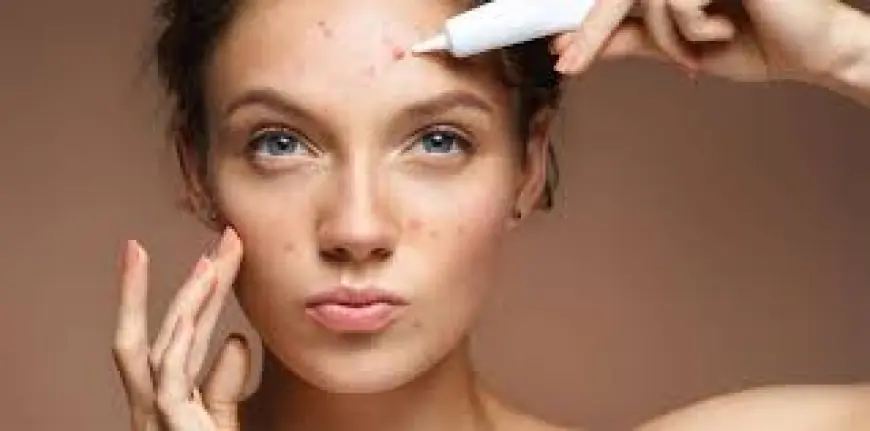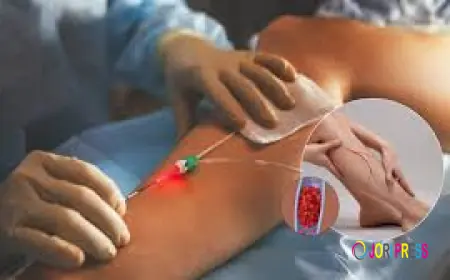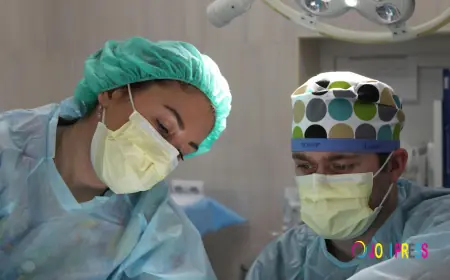Tretiva 40 mg: The Strong Solution for Stubborn Acne
For many, it’s a stubborn skin condition that refuses to go away with over-the-counter creams, fancy face washes, or home remedies. If you’ve tried everything under the sun and your skin still isn’t cooperating, Tretiva 40 mg might be the strong solution you need

Acne is more than just a teenage phase. For many, it’s a stubborn skin condition that refuses to go away with over-the-counter creams, fancy face washes, or home remedies. If you’ve tried everything under the sun and your skin still isn’t cooperating, Tretiva 40 mg might be the strong solution you need.
Tretiva 40 mg is a powerful prescription medication used for treating severe, resistant, or nodulocystic acne—the kind that causes deep, painful pimples, scarring, and emotional distress. Backed by science and trusted by dermatologists worldwide, this capsule holds the key to clearer skin when nothing else seems to work.
Let’s explore how Tretiva 40 mg works, who it’s for, its benefits, potential side effects, and how to use it safely and effectively for lasting acne relief.
Understanding Tretiva 40 mg
Tretiva 40 contains Isotretinoin, a derivative of vitamin A. Isotretinoin belongs to a group of drugs known as retinoids, which are known for their ability to dramatically reduce acne symptoms by targeting the root causes.
Unlike topical treatments that only work on the surface, Tretiva works systemically, meaning it affects the entire body. That’s why it’s only prescribed for severe acne that hasn’t responded to other treatments like antibiotics or retinoid creams.
How Does Tretiva 40 mg Work?
Tretiva 40 mg attacks acne from four different angles:
-
Reduces Sebum Production
One of the biggest causes of acne is excess oil (sebum). Isotretinoin reduces the size and activity of sebaceous glands, drastically cutting down oil production. With less oil clogging pores, acne has fewer chances to form. -
Prevents Clogged Pores
By normalizing skin cell turnover, it stops dead skin cells from building up and blocking hair follicles, which often leads to whiteheads and blackheads. -
Fights Inflammation
It has anti-inflammatory effects that help reduce the swelling, redness, and tenderness of inflamed acne. -
Reduces Bacterial Growth
Tretiva indirectly decreases the population of Cutibacterium acnes, the bacteria responsible for causing acne, by eliminating the environment they thrive in—excess oil.
Who Should Use Tretiva 40 mg?
Tretiva 40 mg is typically prescribed for:
-
Severe nodular or cystic acne
-
Acne that hasn’t improved with other treatments
-
Acne causing permanent scarring
-
Recurrent acne despite long-term topical or antibiotic use
Because of its potency and potential side effects, it is not recommended for mild or occasional breakouts. A dermatologist must evaluate your condition and decide if Tretiva is the right course of treatment.
Benefits of Tretiva 40 mg for Acne
-
Long-Term Results
Many people experience permanent or long-lasting improvement after a single course of Tretiva. It doesn't just suppress acne temporarily; it can cure it in many cases. -
Reduction in Scarring
By controlling severe breakouts, it prevents future acne scars and may even help improve existing ones over time. -
Boost in Confidence
Clearer skin can significantly improve self-esteem, especially for those who have struggled with acne for years. -
Single-Dose Convenience
Unlike creams and gels, Tretiva is taken orally once or twice daily, making it easier to integrate into your daily routine.
How to Take Tretiva 40 mg Safely
Tretiva is a powerful drug and must be taken with care. Here are key guidelines:
Dosage
The dose depends on your weight, skin condition severity, and how you respond to treatment. Tretiva 40 mg is a high dose, usually prescribed for adults with severe acne or as part of a cumulative treatment cycle.
Your doctor may start you at a lower dose (e.g., 20 mg or 30 mg daily) and increase to 40 mg based on your tolerance.
Duration
A typical course lasts 15–20 weeks, depending on how your skin responds. In some cases, a second course may be prescribed after a break.
With Food
Always take Tretiva 40 mg with a meal containing fat to ensure proper absorption. It won’t work well if taken on an empty stomach.
Avoid Vitamin A
Do not take vitamin A supplements while on Tretiva, as this may cause toxicity.
Side Effects: What to Expect
Because of its systemic action, Tretiva 40 mg comes with a range of potential side effects, most of which are manageable and temporary.
Common Side Effects:
-
Dry lips and skin
-
Nosebleeds
-
Dry eyes
-
Muscle or joint pain
-
Sensitivity to sunlight
-
Peeling skin, especially on the hands or feet
Serious Side Effects (less common but possible):
-
Mood changes (depression, anxiety)
-
Vision problems
-
Liver function changes
-
Elevated blood lipids
-
Severe headache (sign of increased intracranial pressure)
If any severe or unusual side effects occur, contact your doctor immediately.
Special Precautions: Pregnancy Warning
Tretiva 40 mg is highly teratogenic, meaning it can cause severe birth defects. Women of childbearing age must follow strict precautions:
-
Negative pregnancy test before starting treatment
-
Use two forms of birth control during and for at least one month after stopping treatment
-
Regular pregnancy testing during treatment
Even a single dose taken during pregnancy can be harmful. That’s why this medication is prescribed under strict medical supervision.
Tips to Manage Side Effects
-
Hydration is Key
Drink plenty of water and use a gentle, hydrating moisturizer and lip balm daily to combat dryness. -
Sun Protection
Always use sunscreen and avoid prolonged sun exposure. Your skin will be more sensitive while on Tretiva. -
Gentle Skincare
Avoid exfoliants, alcohol-based toners, or harsh cleansers. Stick to mild, fragrance-free products. -
Monitor Mood
Keep an eye on your emotional well-being. Talk to your doctor if you notice any unusual feelings of sadness or anxiety. -
Routine Check-Ups
Regular blood tests may be required to monitor liver health, cholesterol, and triglyceride levels.
What to Expect During Treatment
The journey to clear skin with Tretiva 40 mg isn’t always smooth. Here's what many users experience:
-
Weeks 1–2: Initial Breakout (Purging)
Your acne may temporarily worsen as the medication pushes clogs to the surface. This is normal and usually subsides. -
Weeks 3–6: Dryness and Early Improvements
Skin and lips may become dry. Some users start seeing reduced oiliness and fewer breakouts. -
Weeks 7–12: Steady Progress
Acne lesions decrease, and new ones form less frequently. Scars begin to fade. -
Weeks 13–20: Clear Skin
By the end of the course, most users report dramatic improvement or complete clearance.
Life After Tretiva 40 mg
For many, the effects of Tretiva last months to years after treatment ends. Some people never experience serious acne again.
If acne returns, it’s often milder and can be managed with simpler treatments. In some cases, a second course may be prescribed after a safe waiting period.
Final Thoughts
Tretiva 40 mg is not just another acne remedy—it’s a powerful, life-changing treatment for those struggling with stubborn, scarring acne that refuses to go away.
Though it comes with side effects and requires responsible use, the rewards—clear skin, boosted confidence, and freedom from relentless breakouts—make it worth considering under medical guidance.
If you’ve tried everything and your acne still persists, talk to your dermatologist about whether Tretiva 40 mg might be the solution your skin has been waiting for.
What's Your Reaction?
 Like
0
Like
0
 Dislike
0
Dislike
0
 Love
0
Love
0
 Funny
0
Funny
0
 Angry
0
Angry
0
 Sad
0
Sad
0
 Wow
0
Wow
0


















































